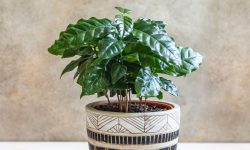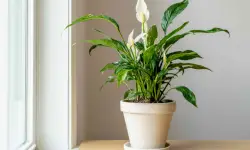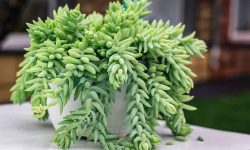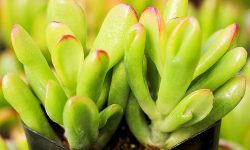Hindu Rope Plant, scientifically known as Hoya carnosa compacta or Hoya compacta, is a captivating succulent that has gained immense popularity among plant enthusiasts. One of the fascinating aspects of this plant is the diversity it offers through various types and cultivars. In this article, we’ll take you on a journey through the different types of Hindu Rope Plants, each with its own unique characteristics and appeal.
Hoya carnosa compacta
The Hoya carnosa compacta, also known as the classic Hindu Rope Plant, is truly a remarkable addition to any indoor plant collection. Its thick, twisted, and gracefully cascading stems set it apart, making it an eye-catching choice for plant enthusiasts. The deep green, glossy leaves add to its allure, with their elegantly curly or contorted shapes, creating a unique and distinctive rope-like appearance. This variety has stood the test of time and remains a beloved favorite among indoor plant enthusiasts. Its enduring charm and easy-care nature make it a must-have for any plant lover’s home.
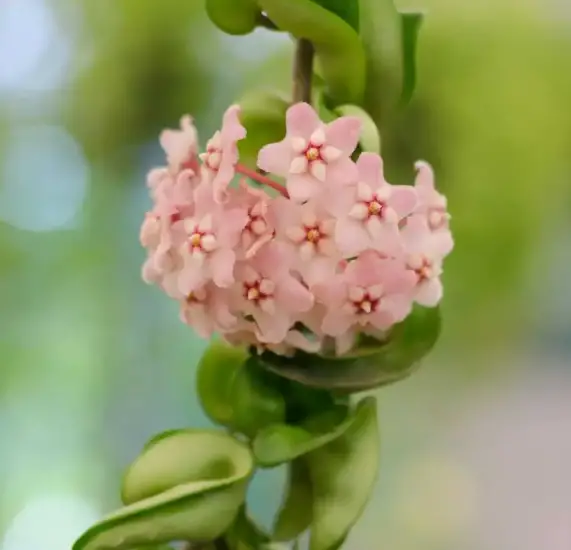
These plants, which are indigenous to India, epiphytically grow on other trees. It’s really simple to take care of as a houseplant and will reward you with clusters of lovely, fragrant flowers if you do!
This beautiful plant can be cultivated as a tabletop plant or in a hanging basket and is excellent for tiny areas. Its beauty, adaptability, and laid-back personality make it a perfect plant for both individuals who are relatively new to caring for houseplants and those with more expertise.
Hoya carnosa variegata
For those who desire a dash of extra elegance in their plant collection, the Hoya carnosa variegata is an outstanding selection. This variety boasts leaves adorned with graceful creamy-white or yellow variegation tracing along their edges, a striking contrast against the lush dark green background. The Hoya carnosa variegata not only adds a touch of sophistication to any space but also captivates with its delicate, variegated beauty.
This evergreen perennial may survive on other plants and is native to the humid tropical rain forests of eastern Asia. It has no parasitic tendencies, though.
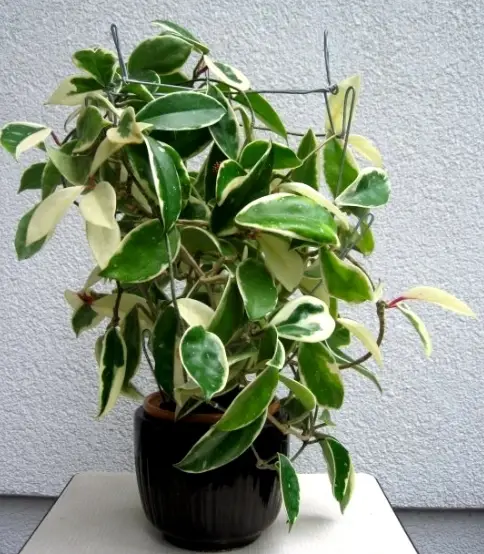
Instead, it is a non-parasitic epiphyte that can obtain enough moisture and nutrients from the surrounding air and precipitation.
Its fragrant blossoms are used to make fragrances and cosmetics. This beauty queen is also capable of removing dangerous indoor air pollutants and is not frightened of hard work.
Hoya carnosa ‘Krinkle 8’
The ‘Krinkle 8’ variation of the Hindu Rope Plant is a captivating choice for plant enthusiasts looking to add a unique texture to their collection. What sets it apart are its deeply folded or crinkled leaves, which give it a charming and distinctive appearance. Despite the intriguing texture, these leaves retain their waxy texture and maintain a lush, vibrant green color. The ‘Krinkle 8’ Hoya carnosa is a delightful addition to any plant collection, bringing both visual interest and a touch of elegance to indoor spaces.
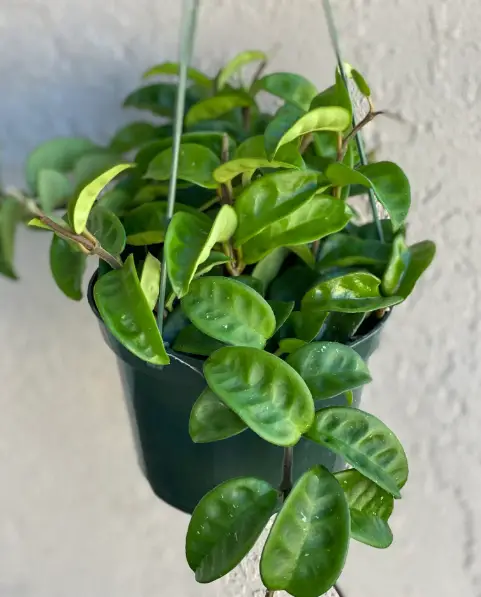
‘Krinkle 8’ Hoya carnosa is a wild variation of the traditional Wax Plant. Its thick, waxy leaves are curled inward and puckered, giving it an appearance that is nearly a mix between the common carnosa and another well-known cultivar, the Hindu Rope Hoya. This is an excellent choice for a hanging plant because the long vines can climb up a trellis or cascade downward as they get longer. These star-shaped pink blossoms with scarlet centers and sweet-smelling flower clusters are truly stunning.
Hoya carnosa ‘Krimson Queen’
The Hoya carnosa ‘Krimson Queen’ is a truly captivating variety distinguished by its stunning variegated leaves. These leaves exhibit a remarkable blend of pink, cream, and green hues, creating a mesmerizing tapestry of colors. The variegation stands in beautiful contrast to the deep, rich green sections of the leaves, forming a striking and visually arresting display. The ‘Krimson Queen’ Hoya carnosa is not only a testament to nature’s artistry but also a magnificent addition to any plant enthusiast’s collection, adding a touch of elegance and charm to any space.
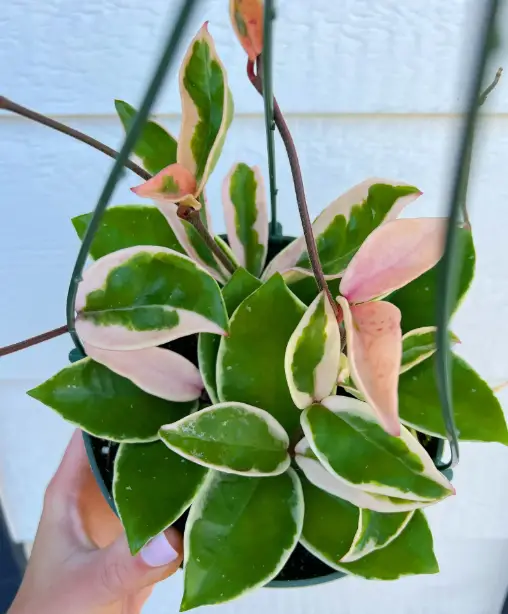
When given the strong indirect light that they require, hoya carnosas are low-maintenance indoor plants. Both frequent watering and high humidity levels are not necessary for them. It won’t need much water because the Hoya carnosa Krimson Queen is succulent and has waxy leaves.
Hoya carnosa ‘Chelsea’
The Hoya carnosa ‘Chelsea’ is a visually striking variety renowned for its captivating variegated leaves. Its foliage boasts a splendid contrast with creamy-white edges and a lush green center, creating a captivating and eye-catching display. For plant enthusiasts who have an affinity for variegated plants, the ‘Chelsea’ is a delightful choice. Its unique blend of colors adds a touch of elegance and charm to any indoor garden or collection, making it a standout selection for those with an appreciation for nature’s aesthetic wonders.
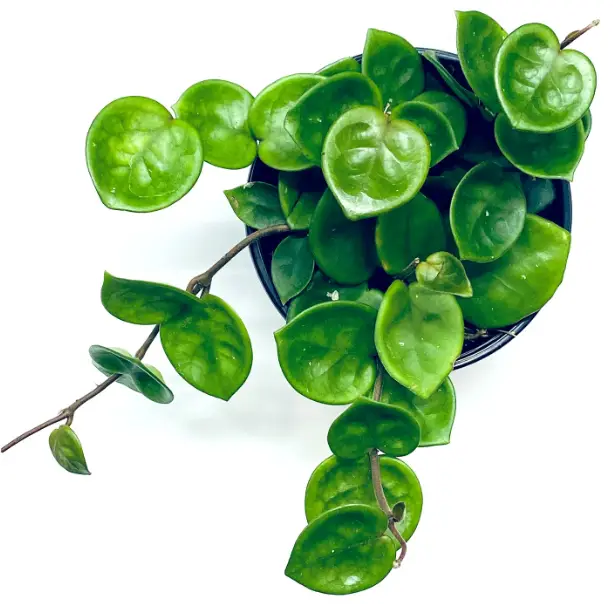
The glossy, puckered, heart-shaped leaves of the Hoya carnosa ‘Chelsea’ fill many homes with grace, beauty, and glitz. In the right conditions, the Hoya carnosa ‘Chelsea’ will produce bursts of blossoms. Keep a watch out for their transient yet fragrant offering, since their bloom season is short. If you can provide them with the medium to strong indirect light that hoya carnosas demand, they are low-maintenance indoor plants. They do not require high humidity levels or continuous watering. The Hoya Chelsea needs little water because it is succulent and has waxy leaves.
The Hoya carnosa ‘Exotica’
The Hoya carnosa ‘Exotica’ is a captivating cultivar that showcases its distinctiveness through an intriguing white or silver splatter pattern adorning its deep green leaves. This exquisite pattern adds a touch of mystique to the plant’s appearance, making it a truly exceptional addition to any collection. With its enigmatic and visually captivating foliage, the ‘Exotica’ Hoya carnosa is sure to pique the curiosity and admiration of plant enthusiasts, adding a unique and charming element to indoor spaces.
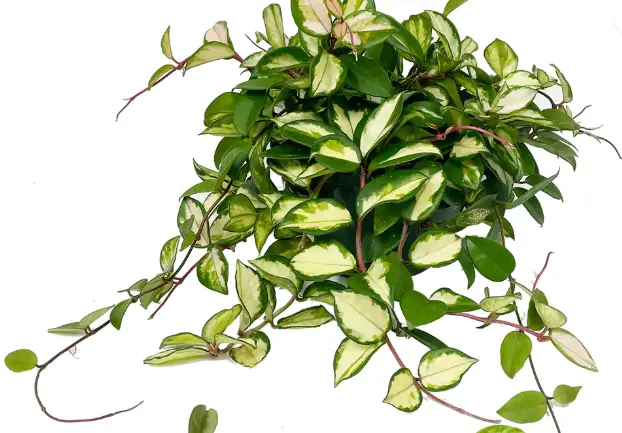
It’s as simple to take care of your Hoya carnosa ‘Exotica’ as a four-piece puzzle! You won’t need to water them frequently, and they hardly ever (if ever) require re-potting because to the waxy leaves that store water. These exquisite wax vines feature stunning leaves that range in hue from white to pink.
Hoya carnosa ‘Compacta Hindu Rope Splash’
The Hoya carnosa ‘Compacta Hindu Rope Splash’ is a fascinating variation that shares the compact growth habit of the Compacta Hindu Rope but with an added twist. Its leaves are adorned with distinctive splashes of variegation, which sets it apart from its classic counterpart. This unique feature adds an element of intrigue and visual appeal to the plant, making it an excellent choice for those seeking a compact yet captivating addition to their indoor plant collection. The ‘Compacta Hindu Rope Splash’ offers the best of both worlds – the charm of the Compacta Hindu Rope and the allure of variegation, making it a standout choice for plant enthusiasts.
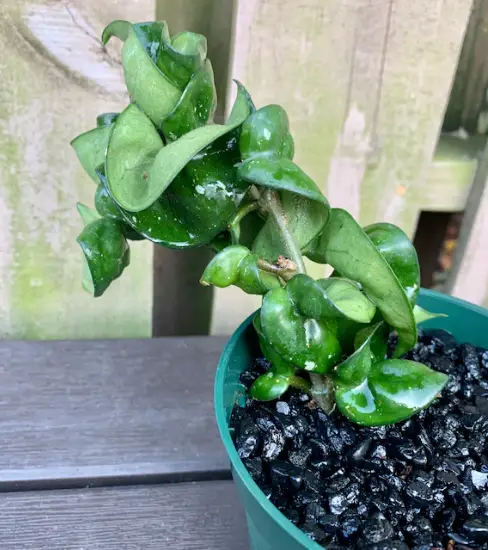
How to care for Hindu Rope Plant?
Proper care is essential to keep it healthy and thriving. Here are some tips for caring for your Hindu Rope Plant:
– Light: Hindu Rope Plants thrive in bright, indirect sunlight. Place them near a window with filtered sunlight or in a spot where they receive dappled sunlight. Avoid exposing them to harsh, direct sunlight, as it can scorch their leaves.
– Temperature: Maintain a warm environment for your plant. These plants prefer temperatures between 60°F to 80°F (15°C to 27°C) during the growing season. Avoid exposing them to temperatures below 50°F (10°C).
– Watering: Allow the top inch or so of the soil to dry out between waterings. Overwatering can lead to root rot, so it’s crucial not to keep the soil constantly wet. Water sparingly during the winter months when the plant’s growth slows down.
– Humidity: Hindu Rope Plants appreciate moderate to high humidity levels. If your home is dry, especially during the winter, consider using a humidity tray or a room humidifier to increase humidity around the plant.
– Potting Mix: Use a well-draining potting mix, preferably one designed for succulents or cacti. A mix that provides good aeration and drainage is essential to prevent root rot.
– Container: Plant your Hindu Rope in a container with drainage holes to prevent water from accumulating at the bottom.
– Fertilizing: Feed your plant with a balanced, water-soluble fertilizer diluted to half-strength during the growing season (spring and summer). Reduce or eliminate fertilization during the dormant winter months.
– Pruning: Prune your Hindu Rope Plant sparingly to maintain its shape and remove any dead or damaged growth. Be cautious when pruning, as the stems are fragile.
– Support: The long, trailing stems of the plant may benefit from some support, especially if they become too heavy or begin to droop. You can use stakes or trellises for this purpose.
– Pests: Keep an eye out for common indoor plant pests like mealybugs and aphids. If you notice any infestations, treat them promptly with insecticidal soap or neem oil.
– Repotting: Hindu Rope Plants prefer to be slightly root-bound, so you don’t need to repot them often. Repot only when the plant has outgrown its current container, typically every 2-3 years in the spring.
By following these care guidelines, you can enjoy the unique and beautiful appearance of your Hindu Rope Plant for years to come.
Hindu Rope Plant Propagation
Stem cuttings make for simple propagation of Hindu rope plants. Take a portion of a healthy stem that is about 4 inches long. Make careful to cut two or three nodes at the very least. After removing the lower section’s leaves, let the cutting dry overnight. The cutting can be rooted in water or in a potting soil that is well-drained and airy. Be careful that, like mature plants, the cuttings take a long time to root and thrive.
Hindu Rope Plants: Growing Them From Seed
Hindu rope plants are famously challenging to cultivate from seed, and there is no assurance that the offspring will resemble the original plant in any way. Therefore, it is advised to propagate through cuttings.
Typical Issues with Hindu Rope Plant
Hindu Rope Plants are generally hardy and easy to care for, but like any houseplant, they can encounter issues. Here are some common problems you may encounter with a Hindu Rope Plant and how to address them:
– Overwatering: Overwatering is a common issue with Hindu Rope Plants. Symptoms include yellowing leaves, wilting, or even root rot. To prevent overwatering, allow the top inch or so of the soil to dry out before watering. Ensure that your pot has drainage holes to allow excess water to escape.
– Underwatering: If you see wrinkled or shriveled leaves, it’s a sign that your plant is not getting enough water. Water your Hindu Rope Plant thoroughly when the top inch of soil feels dry to the touch, and adjust your watering schedule accordingly.
– Poor Drainage: Inadequate drainage can lead to root rot. Ensure that your plant is potted in a well-draining potting mix and that the container has drainage holes to prevent water from accumulating at the bottom.
– Insufficient Light: If your Hindu Rope Plant doesn’t receive enough light, it may become leggy or fail to produce flowers. Place it in a location with bright, indirect sunlight to encourage healthy growth and potential blooms.
– Leaf Drop: Occasional leaf drop is normal, but excessive leaf drop can indicate stress from factors like temperature fluctuations, drafts, or inconsistent watering. Maintain stable conditions and a proper care routine to minimize leaf loss.
– Lack of Blooms: Hindu Rope Plants are known for their unique, waxy flowers. If your plant isn’t flowering, it may be due to insufficient light or age. Ensure it gets adequate light and be patient, as it can take several years for some varieties to produce flowers.
– Yellow Leaves: Yellowing leaves can be a sign of various issues, including overwatering, underwatering, or nutrient deficiencies. Examine the plant’s overall health and adjust care accordingly.
Conclusion
In this comprehensive guide, we’ve delved into the mesmerizing world of Hindu Rope Plants, exploring seven distinct types and providing valuable insights into their growth and care. These plants, known for their unique trailing, rope-like appearance and waxy leaves, offer a diverse range of choices for both novice and experienced plant enthusiasts.
From the classic Hoya carnosa compacta to the variegated beauty of ‘Krimson Queen’ and ‘Chelsea,’ each type of Hindu Rope Plant adds a touch of natural elegance to indoor spaces. While the care requirements remain relatively similar across varieties, understanding the specific needs of your chosen type is crucial for ensuring their health and vibrancy.
Remember to provide the right balance of light, water, and humidity, as well as occasional pruning to maintain their captivating appearance. With proper care and attention, these remarkable plants will reward you with their enduring beauty and charm, making them a wonderful addition to your indoor garden.



